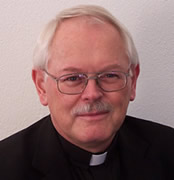
We speak of that section in the Gospels which narrates Jesus’ life from the Last Supper until his death and burial, as chronicling his “Passion”. On Good Friday, the lector begins the Gospel with the words: “The Passion of Our Lord Jesus Christ According to John”.
Why do we call Jesus’ suffering just before his death his passion?
Generally, this is not properly understood. We tend to think that “passion” here refers to intense sufferings, as in “passionate suffering”. This isn’t wrong but misses a key point. Passion comes from the Latin, PASSIO, meaning passiveness, non-activity, absorbing something more than doing something. Hence, the “Passion” of Jesus refers to that time in his life when his meaning for us is not defined by what he was doing but rather by what was being done to him. What’s being said here?
The life and ministry of Jesus can be divided into two distinct parts: scholars estimate that Jesus spent about three years preaching and teaching before being put to death. For most of that time, in fact for all of it except the last day, he was very much the doer, in command, the active one, teaching, healing, performing miracles, giving counsel, eating with sinners, debating with church authorities, and generally, by activity of every sort, inviting his contemporaries into the life of God. And he was busy, so pressured that at times he didn’t have time to eat. For almost all his public life Jesus was actively doing something.
However, from the time he walked out of the last supper room that activity stopped. He is no longer the one who is doing things for others, but the one who is having things done to him. In the garden, they arrest him, bind his hands, lead him to the high priest, then to Pilate. He is beaten, humiliated, stripped of his clothes, and eventually nailed to a cross where he dies. This constitutes his “passion”, that time in his life and ministry when he ceases to be the doer and becomes the one who has things done to him.
What is so remarkable about this is that our faith teaches us that we are saved more through his passion (his death and suffering) than through all his activity of preaching and doing miracles. How does this work?
Allow me an illustration: some years ago, my sister Helen, an Ursuline nun, died of cancer. A nun for more than thirty years, she much loved her vocation and was loved within it. For most of those thirty years, she served as a den-mother to hundreds of young women who attended an academy run by her order. She loved those young women and was for them a mother, an older sister, and a mentor. As well, for the last twenty years of her life, after our own mother died, she served in that same capacity for our family, organizing us and keeping us together. Through all those years she was the active one, the consummate doer, the one whom others expected to take charge. And she relished the role, was born for it. She loved doing things for others.
Then, nine months before she died, cancer struck her brutally and she spent the last months of her life bedridden. Now things needed to be done for her. Doctors, nurses, the sisters in her community, and others, took turns taking care of her. And, like Jesus from the time of his arrest until the moment of his death, her body too was humiliated, led around by others, stripped, prodded, and stared at by curious passers-by. Indeed, like Jesus, she died thirsty, with a sponge held to her lips by someone else.
That was her passion. She, who had spent so many years doing things for others, now had to submit to having things done to and for her. But, and this is the point, like Jesus, she was able in that period of her life when she was helpless and no longer in charge, to give life and meaning to others in a deeper way than she could during all those years when she was active and doing so many things for others.
That is the mystery of the fruitfulness of passivity, of helplessness. And there’s an important lesson here, not the least of which is the potential fruitfulness of the terminally ill, the severely handicapped, and the sick. There’s a lesson too on how we might understand what we have to give to others when we are ill, helpless, and in need of care from others.
The passion of Jesus teaches us that, like Jesus, we give as much to others in our passivity as in our activities. When we are no longer in charge, beaten down, humiliated, suffering, and unable even to make ourselves understood by our loved ones, we are undergoing our passion and, like Jesus in his passion, have in that the opportunity to give over our love in a very deep way.
—
Oblate Father Ron Rolheiser is a theologian, teacher, and award-winning author.
He can be contacted through his website www.ronrolheiser.com.
Now on Facebook www.facebook.com/ronrolheiser
—
Feature photo courtesy of CNS photo/Gregory A. Shemitz.




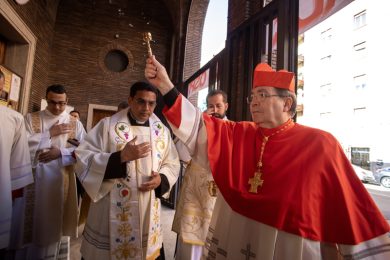
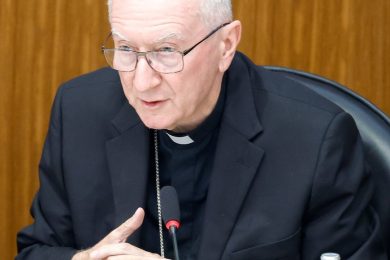
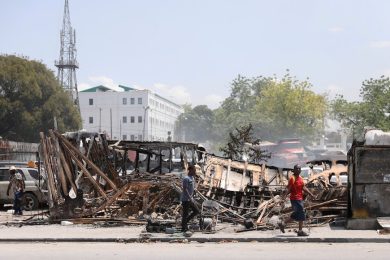















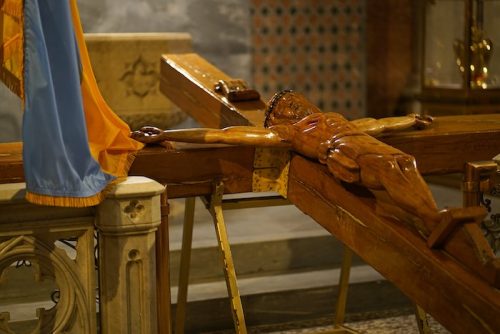
Ron Rolheiser offers an expanded definition of “passion” as even passivity. I often think I have to be moving, active, productive. Thanks, God, for the love and acceptance you shower me and all Your children and Creation as a whole – at all times!